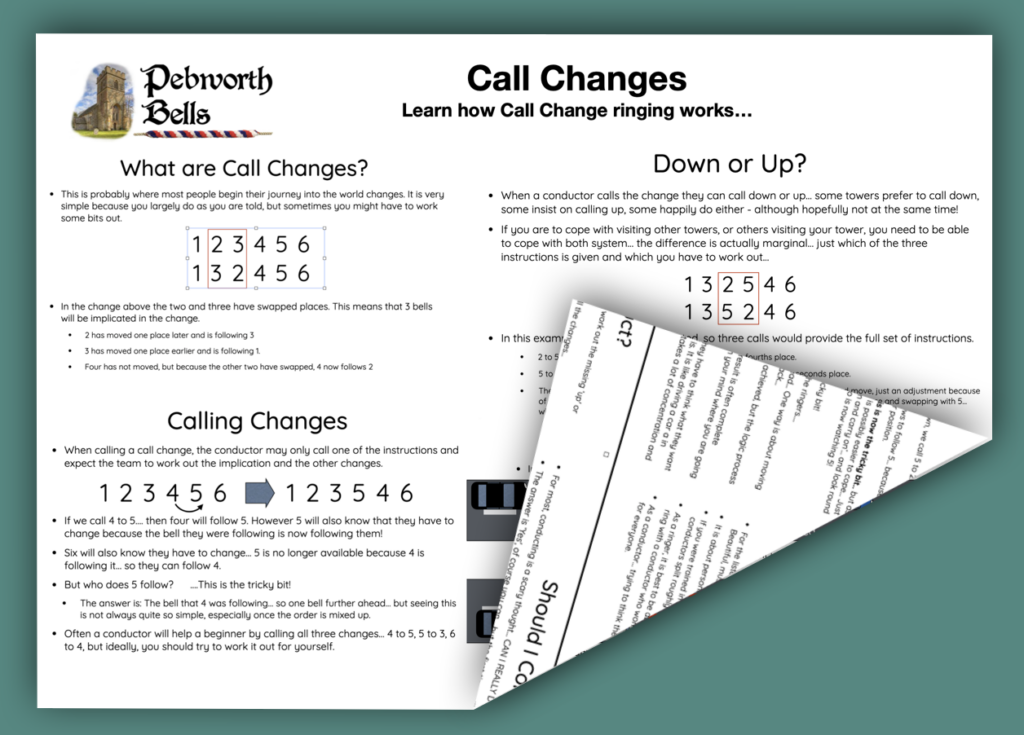Call Changes
Learn how Call Change Ringing works...
Print our Crib Sheet
We understand that it is not always possible to look at an online page when inside a tower that has three foot thick stone walls… and some folks just like to have something tangible….
So to help, we have produced crib sheet which prints as a two sided A4 sheet. (If your printer can print both sides, remember to set it to short edge binding so the second page prints the right way up!)
The crib sheet contains most of the information you see on this web page, but formatted for A4 paper!

Changing Places...
This is probably where most people begin their journey into the world changes. It is very simple because you largely do as you are told, but sometimes you might have to work some bits out.
In the change above the two and three have swapped places. This means that 3 bells will be implicated in the change.
- 2 has moved one place later and is following 3
- 3 has moved one place earlier and is following 1.
- Four has not moved, but because the other two have swapped, 4 now follows 2

Only 1 Call...
When calling a call change, the conductor may only call one of the instructions and expect the team to work out the implication and the other changes.
- If we call 4 to 5…. then four will follow 5. However 5 will also know that they have to change because the bell they were following is now following them!
- Six will also know they have to change… 5 is no longer available because 4 is following it… so they can follow 4.
- But who does 5 follow? ….This is the tricky bit!
- The answer is: The bell that 4 was following… so one bell further ahead… but seeing this is not always quite so simple, especially once the order is mixed up.
Often a conductor will help a beginner by calling all three changes… 4 to 5, 5 to 3, 6 to 4, but ideally, you should try to work it out for yourself.
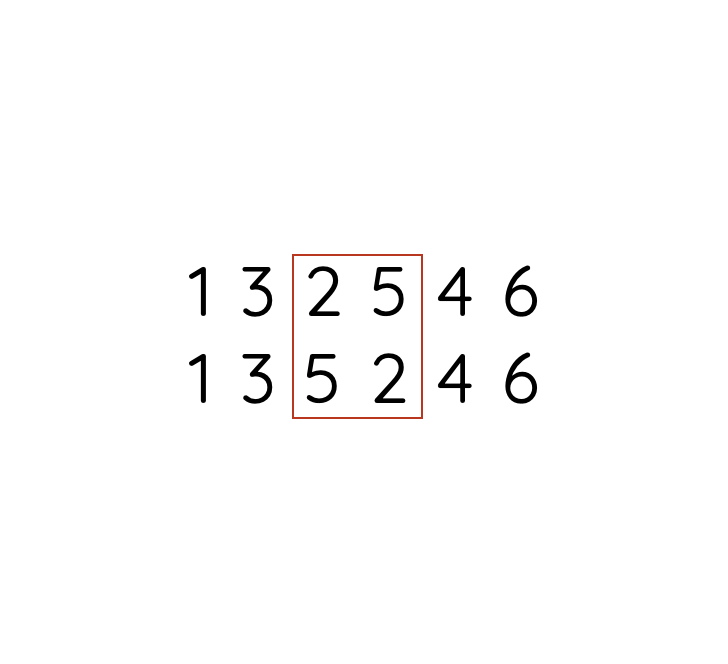
Down or Up?
When a conductor calls the change they can call down or up… some towers prefer to call down, some insist on calling up, some happily do either – although hopefully not at the same time!
If you are to cope with visiting other towers, or others visiting your tower, you need to be able to cope with both system… the difference is actually marginal… just which of the three instructions is given and which you have to work out…
In this example, three bells are affected, so three calls would provide the full set of instructions.
- 2 to 5. This is the up call, because 2 has moved up into fourths place.
- 5 to 3. This is the down call, because 5 has moved down past 2. into seconds place.
- The last option… 4 to 2 would never be called alone because there is no associated move, just an adjustment because of the other two. (If you only called 4 to 2, it would be interpreted as four moving down one place and swapping with 5… Something completely different!)
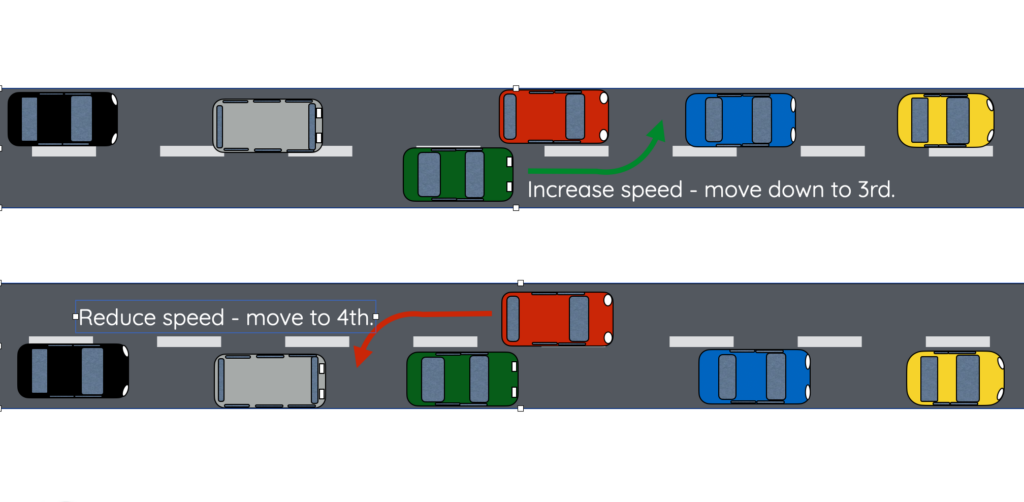
Overtake or Undertake?
In a queue of traffic, if someone overtakes, they will swap places with the car in front.
The same result could be achieved by the car in front under-taking…. You pull into another lane and slow down to let another vehicle pass…. Not something most drivers ever contemplate, unless for the emergency services!
Calling down is like telling a ringer to overtake… calling up is similar to getting them to pull in and undertake… allow someone past.
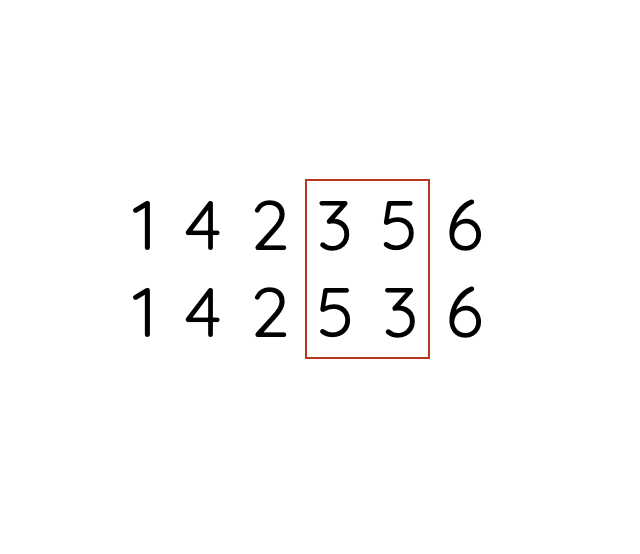
What's the difference..?
So calling up or down is simply a matter of which of the three calls the conductor gives to the band… and which you work out yourself.… Either way, it amounts to the same thing.
So lets look at the difference in a real example…
So lets look at the difference in a real example…
- If we call up, we call 3 to 5.
- 6 knows that because 3 is following 5, they will now follow 3.
- 5 needs to move down – i.e. work out who 3 was following and follow them… That is the tricky bit! So you have to look one place ahead…
- If we call down, we call 5 to 2… Tricky bit done!
- 3 also knows to follow 5… because 5 has taken their position.
- 6 to ?… This is now the tricky bit.. but as 6 is static, it is possibly easier to cope… Just ‘KEEP CALM AND CARRY ON’… and look round to see who is now watching 5!
Why the Contention?
- Either way, one of the bells has more to work out… That’s the tricky bit!
- So why the difference?….it is actually about the conductor, not the ringers….
- It is how the conductor thinks about moving the bells in their head… One way is about moving bells from back to front… the other moves bells from front to back…
- Like overtaking or undertaking, exactly the same result can be achieved, but the logic process is reversed.
- Expecting a conductor to work the other way is tricky and the result is often complete confusion… simply because as a conductor you have to have in your mind where you are going and be thinking ahead…
- Even good ringers will struggle with calling the ‘wrong way’…. they have to think what they want to do, then convert each thought to work out what the inverse is. It is like driving a car a in France… some controls are back to front and so is the road! It takes a lot of concentration and it is easy to get muddled!
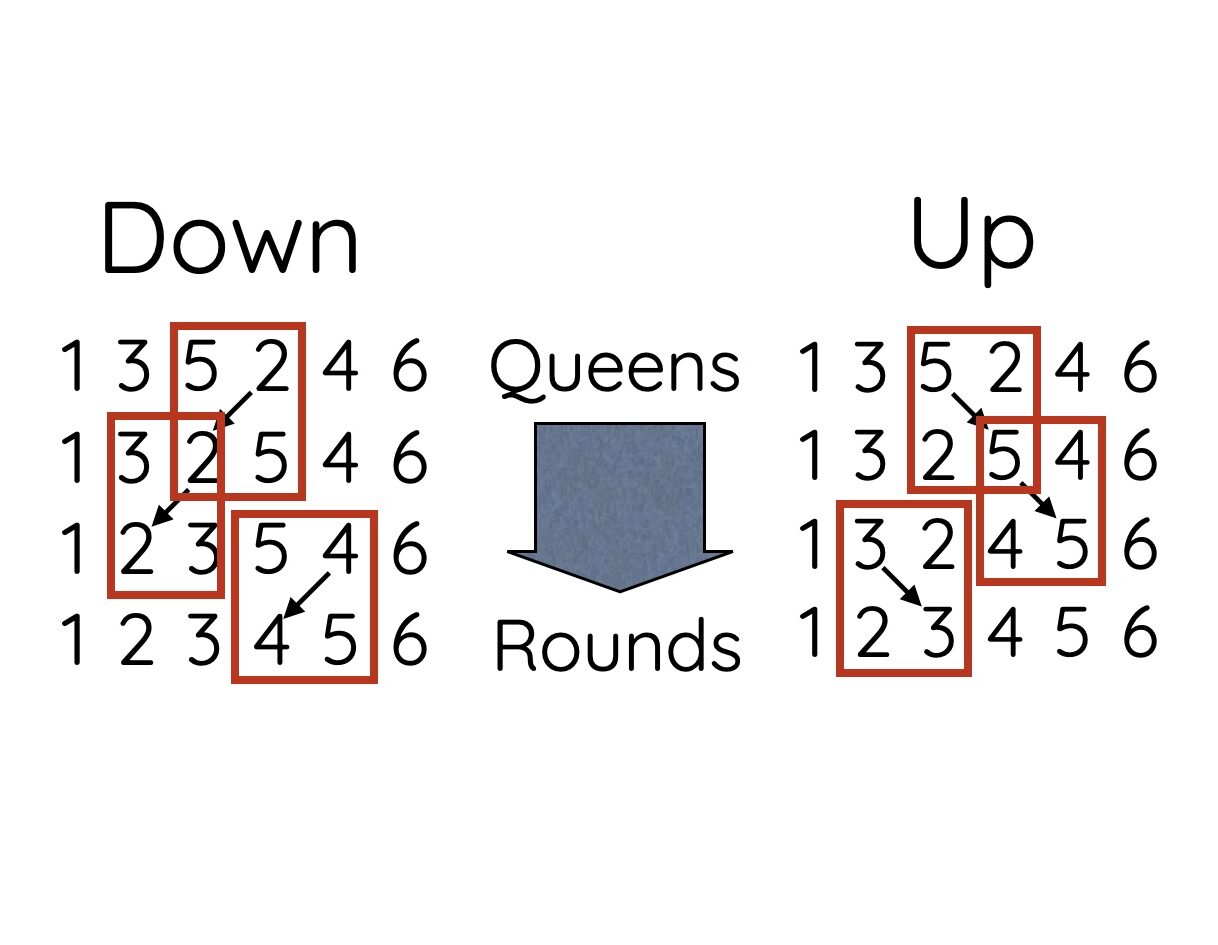
Two thought Processes
The changes adjacent are the same, but one shows arrows for the down calls and the other for the up call.
Both give the same end result, but for the conductor the thought processes are reversed… and the intermediate stages might be slightly different.
- The down conductor will choose to move 2 down 2 places and then 4 down 1 place.
- The up conductor will choose to move 5 up 2 places and 3 up 1 place.
Planning to Conduct?
Once you can ring call changes without help, you will be able to work out the missing ‘up’ or ‘down’ numbers…
So now it is a good time to start your conducting career and call the changes too…
A good place to start is with a piece of paper…
- Choose a well known change that you like and then look at who you will swap to make it happen.
- List the swaps and perhaps also look at all three calls you might need to provide to a learner art each individual swap.
- Then look at what you need to do to get them back again! Try to do the swaps in a different order, so it creates different changes
Can I Really do it?
For most, conducting is a scary thought… CAN I REALLY DO THIS?
The answer is ‘Yes’, of course you can… but the first time will indeed be scary! Everyone will be waiting (and hopefully acting) on your every word!
So before you make this leap, be sure to prepare yourself well… It will only take a few minutes!
- For your first go… KEEP IT SIMPLE and plan what you want to do on paper…
- Think about the rows you want to hear and then the calls you will have to make.
- Learn the route to each of your chosen ‘important changes’.
As you get more experienced, you will find you can plan as you go and will see so much more.
Call Change Resources
Call changes are rung in most towers, but it is the bell ringers in Devon who have made call change ringing their own. Below are some links to sites with Devon Peals, as well as more information about call change ringing in general.

